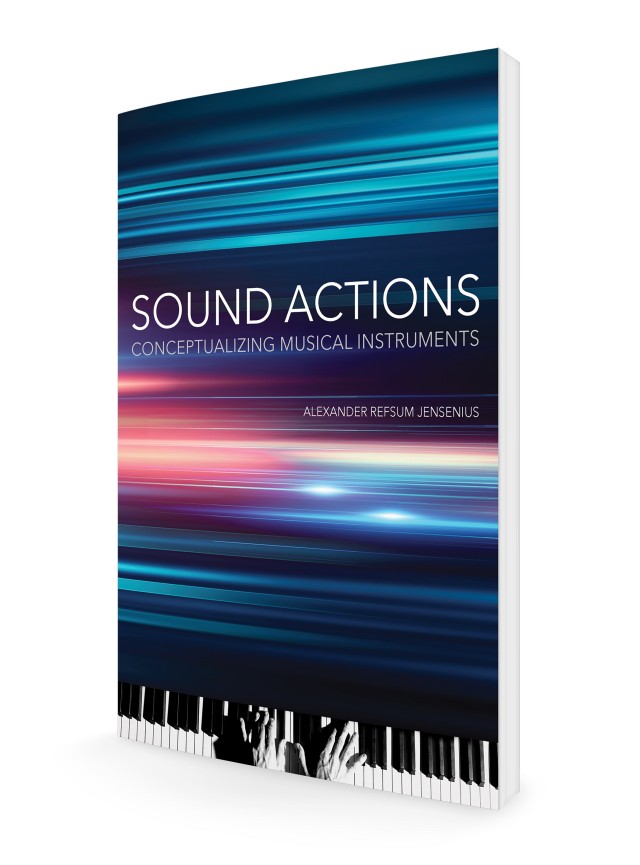Description
“Musicking” encapsulates both the making of and perception of music, so it includes both active and passive forms of musical engagement. But at its core, it is a relationship between actions and sounds, between human bodies and musical instruments. Viewing musicking through this lens and drawing on music cognition and music technology, Sound Actions proposes a model for understanding differences between traditional acoustic “sound makers” and new electro-acoustic “music makers.”
 What is a musical instrument? How do new technologies change how we perform and perceive music? What happens when composers build instruments, performers write code, perceivers become producers, and instruments play themselves? The answers to these pivotal questions entail a meeting point between interactive music technology and embodied music cognition, what author Alexander Refsum Jensenius calls “embodied music technology.” Moving between objective description and subjective narrative of his own musical experiences, Jensenius explores why music makes people move, how the human body can be used in musical interaction, and how new technologies allow for active musical experiences. The development of new music technologies, he demonstrates, has fundamentally changed how music is performed and perceived.
What is a musical instrument? How do new technologies change how we perform and perceive music? What happens when composers build instruments, performers write code, perceivers become producers, and instruments play themselves? The answers to these pivotal questions entail a meeting point between interactive music technology and embodied music cognition, what author Alexander Refsum Jensenius calls “embodied music technology.” Moving between objective description and subjective narrative of his own musical experiences, Jensenius explores why music makes people move, how the human body can be used in musical interaction, and how new technologies allow for active musical experiences. The development of new music technologies, he demonstrates, has fundamentally changed how music is performed and perceived.
Bio
Alexander Refsum Jensenius is Professor of Music Technology at the University of Oslo and Director of RITMO Centre for Interdisciplinary Studies in Rhythm, Time, and Motion.
Open Access
The book is free to download, thanks to generous support from the University of Oslo.
Book launch
Watch a recording of the book launch at the University of Oslo Library on 30 January 2023.
365 Sound Actions
One of the core arguments in the book is that there are differences between action-sound couplings and action-sound mappings. Couplings can be found in the interaction of physical objects. Mappings are designed and constructed in electro-acoustic systems. To explore this separation in practice, I have run a sound action project throughout 2022. Each day I recorded a sound action using my mobile phone. The collection can be seen in this playlist:
The plan is to use the recordings in new scientific and artistic experimentation.
Table of Contents
- Acknowledgments
- Prelude
- Part I: Musicking
- 1: Music as an Active Process
- 2: Music as an Embodied Process
- 3: Musical Instruments
- Part II: Embodiment
- 4: Music-Related Body Motion
- 5: Functional Aspects
- 6: Representations of Sound Actions
- Part III: Interaction
- 7: Action–Sound Couplings
- 8: Action–Sound Mappings
- 9: Spatiotemporality
- Part IV: Affection
- 10: From Ivory to Silicone
- 11: Unconventional Instruments
- 12: Performing in the Air
- Postlude
- Bibliography
- Index